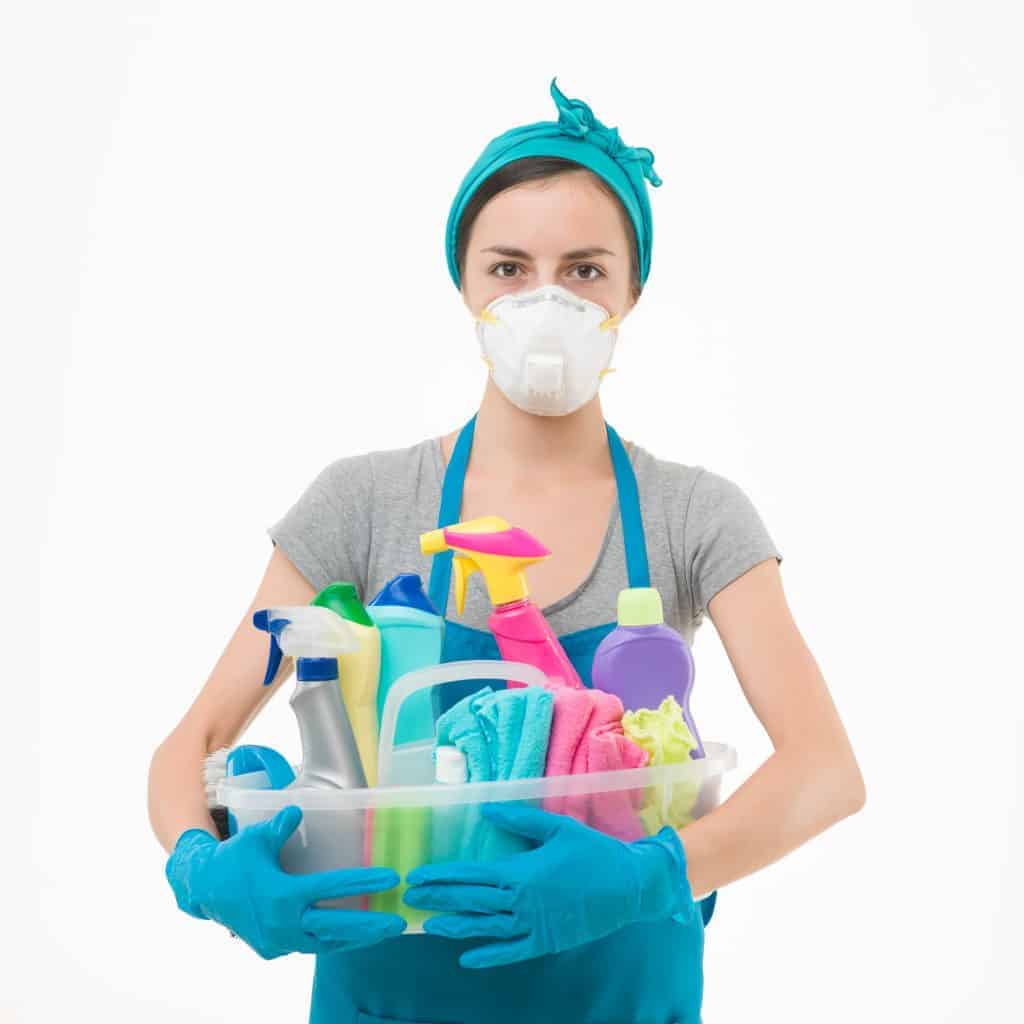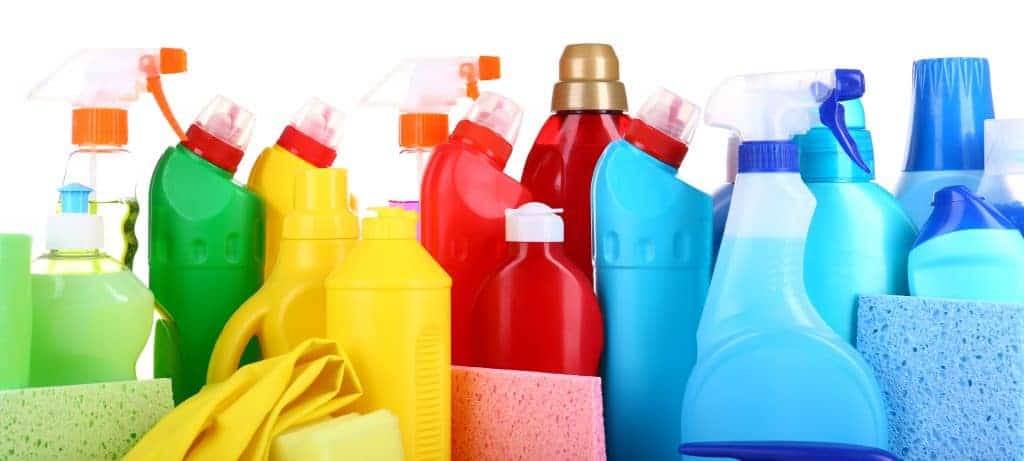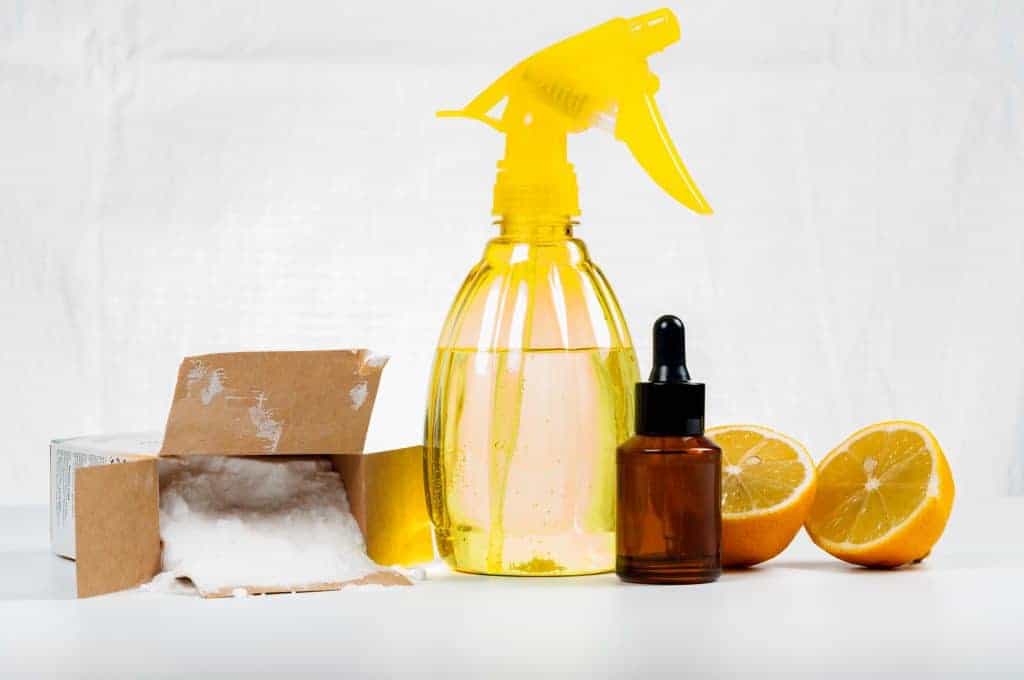A clean home is a happy home, or so we’ve been told. But what you might not realize is that your favorite floral-scented cleaning solution is full of dangerous toxins that you’re exposing your family and pets to. And what’s worse is that the companies that make cleaning solutions aren’t required to list their ingredients on their products. Want to know what’s lurking in your favorite cleaners?

Here’s a list of the most common toxic offenders you should avoid:
Phthalates
According to a 2003 study, men with high levels of phthalate compounds in their systems had lower sperm counts, resulting in low fertility. Because these compounds are common in dish soap, toilet paper, and air fresheners, we can be exposed several times each day. They’re absorbed through skin contact and can travel quickly through the entire body.
Perchloroethylene
The EPA has classified perchloroethylene as a possible carcinogen. It’s common in spot removers and carpet cleaners. The EPA has issued a phase-out of this ingredient in residential buildings by the year 2020 and some states are taking it a step further. California is working on eliminating the ingredient all together by the year 2023. This compound is easily inhaled and can lead to dizziness and loss of coordination.
Triclosan
In an effort to increase antibacterial properties in dishwashing detergents and hand soap, triclosan is often an added ingredient in products labeled as antibacterial. This is an issue according to medical research scientists as it encourages microbes to develop resistance to less aggressive antibacterial agents. While more research is needed, triclosan is suspected to be a carcinogen and an endocrine disruptor. Look for products made with essential oils, or better yet – DIY your own antibacterial cleansing products!
Quarternary
Similar to triclosan, quarternary can promote resistant microbes and has been found to be a skin irritant. It might be a culprit in respiratory disorders as well. When exposed to quarternary in high quantities, there is a risk for asthma development. This ingredient is commonly found in fabric softener liquid and dryer sheets, staying embedded in clothing even after coming out of the dryer. Eco-friendly wool dryer balls are a great alternative for helping fluff clothes.
Ammonium Compounds
There are over a dozen different ammonium compounds. They’re usually added to lotions and conditioners, giving them their “slippery” texture. But they’re also found in cleansing creams, like those for countertops or polishing, and have been known to cause respiratory problems and skin irritation. Allergic reactions are also not unheard of. They’re endocrine disruptors and are toxic to aquatic life, which is an issue if they’re being rinsed down the drain.
2-butoxyethanol
A key ingredient in the majority of window cleaning products, 2-butoxyethanol can cause sore throats and even severe liver or kidney damage in large quantities. If you use a product with this ingredient in a poorly ventilated area, you could be exposing yourself to high levels deemed unsafe by the EPA.
Ammonia
Small amounts of ammonia aren’t believed to cause health issues. But a day spent with cleaning solutions containing ammonia for jewelry, bathroom or kitchen fixtures, and yes hair dye is far from ideal. In large quantities, ammonia can cause severe lung damage. The risk for this increases when ammonia is mixed with other ingredients, especially chlorine or other bleaching agents. The gas produced from mixing ammonia with these ingredients is highly poisonous. Ammonia by itself can burn skin and mucous membranes and should never be left out, as it can be fatal if swallowed by pets or children.
Chlorine
Chlorine is added to many heavy-duty cleaners, including toilet bowl cleaners, scouring powders, and of course laundry-whiteners. It’s even in your tap water. While small amounts of chlorine are most likely safe, our continuous exposure to it through bathing and drinking means that any extra exposure from cleaning supplies can push us over the safety threshold. Chlorine can be classified as a respiratory irritant and can disrupt the functions of the thyroid.
Sodium hydroxide
The common name for sodium hydroxide is lye. If you’ve ever experimented with soap making, you know just how dangerous this ingredient can be and that you should always take special precautions when working with it. It can cause severe burns if it comes in contact with the skin or eyes and inhaling the ingredient can lead to a severe sore throat. It’s commonly found in oven cleaners and drain cleaners because of its ability to break down tough grime but there are other options to try.

Designing Your Toxin-free, Homemade Cleaning Kit
If you want to limit the number of toxins in your home, all it takes are a few empty glass spray bottles and common household ingredients. The next time you reach for a commercial cleaning product, take a moment to consider your other options.
For Removing Grime
There are several natural ingredients that are considered abrasive enough to remove gunk and grime but won’t damage surfaces. Try baking soda for sinks and bathtubs. Coarse kosher salt is great for removing soap scum and cleaning grout. For extra greasy spots, try using a fresh orange or lemon peel, which acts as a natural sponge.
For Removing Stains
To remove stains from carpets, drapes or other fabrics, sprinkle on a little cornstarch and let it sit for about 20 minutes. Then pour club soda or tonic water onto the cornstarch, which should remove the stain. This works great on oil stains that are common when cooking. Hydrogen peroxide is another effective stain removing solution to try.
For Polishing
Grab a little all-natural beeswax from a local beekeeper and you can use it to polish all the natural wood surfaces in your home. Olive oil can also be used to naturally condition and polish wood.
For Disinfecting
White vinegar is the main ingredient you’ll need to naturally disinfect your entire home. For added disinfectant power, mix in a few drops of organic essential oils that possess antibacterial and antimicrobial properties like lemon, peppermint, or tea tree.
To make your own cleaning kit, gather a few of these main ingredients, a few clean glass spray bottles and a sponge or cloth. Mix together your homemade cleaning products and you’re good to go. You won’t just be taking a positive step in the health of your family, you’ll also be saving money and be in control of what you’re scrubbing, spraying, or splashing around your home.
